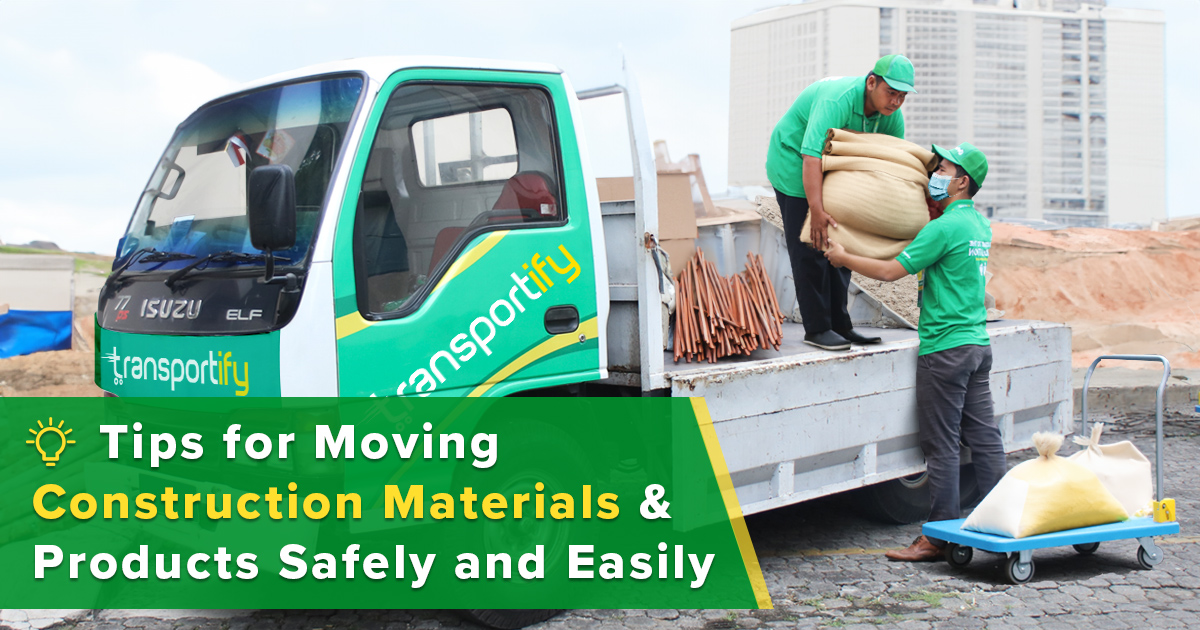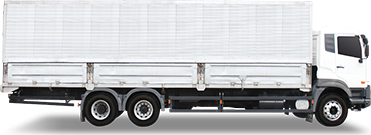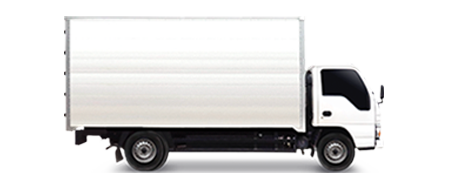
Moving construction materials and products safely and efficiently is a critical aspect of the construction process, impacting project timelines, budgets, and worker safety. This article will explore strategies for transporting these materials, focusing on practical tips and utilizing logistics service providers like Transportify for your construction materials.
Challenges in Moving Construction Materials
Construction materials delivery poses unique challenges, including managing heavy and bulk loads, ensuring the quality of material is not tampered with with, and adhering to safety standards on the proper material handling when loading and unloading.
According to a Manual Material Handling Evaluation Report, repetitive lifting and grasping are common problem areas in the Philippines that result in most accidents when it comes to material handling, especially on bulk and heavy loads. The right approach can mitigate risks associated with moving bulky and heavy construction materials.
Tips to Ensure the Safe Delivery of Construction Products and Materials
Know the Risks
Before starting any transport operation for construction materials, you must carefully evaluate all potential dangers and risks involved. This includes considering the materials and equipment being transported – what they are, how much there is, and their condition.
You also need to look at the transportation method and route, weather and traffic conditions, the loading/unloading procedures, and whether the personnel are properly trained and capable. The plan should also have contingency measures in case of emergencies during transport.
Choose the Right Logistics Service Provider
Selecting the appropriate vehicle for the material type is essential. For instance, heavy and tall construction materials like cement bags and metal bars may need a dropside pickup truck rental for easy loading and unloading, while smaller materials may fit in an L300 van or a Closed Van.
Find the right logistics provider that is flexible enough to accommodate all the construction materials you need. You may explore Transportify a known service provider for construction debris hauling services as well, with options ranging from sedans to bigger trucks that can attend to construction trucks services all over the Philippines.
Refer to the table below for available vehicles to deliver your construction products.
| Vehicle Type | Dimensions/ Weight Limits | Base Price (Metro Manila) | Base Price (Outside Metro Manila) | Base Price (Visayas/Mindanao) |
|---|---|---|---|---|
 Wing Van Wing Van | 32 to 40 x 7.8 x 7.8 ft 12000kg to 28000kg | 7000 PHP | 6500 PHP | 6500 PHP |
| 18 x 6 x 7 ft 7000kg | 4850 PHP | 4850 PHP | 4850 PHP | |
 Closed Van Closed Van | 10 to 14 x 6 x 6 ft 2000kg to 5000kg | 1600 PHP | 1450 PHP | 1450 PHP |
 Open Truck Open Truck | 10 to 21 x 6 ft x open 2000kg and 7000kg | 2300 PHP | 1950 PHP | 1950 PHP |
 L300/Van L300/Van | 8 x 4.5 x 4.5 ft 1000kg | 415 PHP | 374 PHP | 335 PHP |
 Small Pickup Small Pickup | 5 x 5 ft x open 1000kg | 418 PHP | 338 PHP | 325 PHP |
| 5.5 x 3.8 x 3.8 ft 600kg | 375 PHP | 292 PHP | 275 PHP | |
| 5 x 3.2 x 2.8 ft 200kg | 240 PHP | 210 PHP | 160 PHP | |
| 3.5 x 2 x 2.5 ft 200kg | 220 PHP | 190 PHP | 140 PHP |
Secure Materials Properly
Properly securing materials prevents damage during transit. Check the condition and quality of everything, repairing or replacing any damaged or defective items. Use appropriate packaging like boxes, crates, etc., to protect your items from moisture, dust, corrosion, vibrations, and impacts during transport.
Choose Logistics Provider with Real-Time Tracking
During the transportation process, you need to actively monitor how things are going and ensure safety. Utilize logistics apps and platforms to streamline scheduling, tracking, and delivery processes. Services like Transportify offer on demand construction delivery service options tailored to construction needs and real-time monitoring to provide constant oversight to the delivery.
Moving construction materials requires a strategic approach that prioritizes safety, efficiency, and planning. By adopting these tips and leveraging professional logistics services, construction projects can achieve smoother operations and better outcomes.
Additional Tips: Proper Lifting Technique of Heavy Materials
When lifting materials, follow these tips to avoid compressing your spinal discs or straining your lower back:
Feet Support
Keep your feet shoulder-width apart, with one foot slightly ahead of the other (like in a karate stance). This provides a wide base of support.
Proper Bending
Lower your body by bending at the hips and knees only enough to fetch materials from and into the truck. If needed, place one knee on the floor with the other knee bent at a 90-degree angle in front of you (half-kneeling position).
Good Posture
Maintain good posture by looking straight ahead, keeping your back straight, chest out, and shoulders back. This helps keep your upper back straight while allowing a slight arch in your lower back.
Careful Lifting and Carrying
Lift slowly by straightening your hips and knees, not your back. Keep your back straight and avoid twisting while lifting. Hold the load close to your body at belly button level.
Use your feet to change directions, taking small steps. As you change directions, lead with your hips while keeping your shoulders in line with your hips.
When setting the load down, squat using your knees and hips only, carefully lowering the construction products.
Remember, do not bend forward from the waist when lifting. Instead, squat down to the load, keep it close, and straighten your legs to lift. Never lift heavy materials or construction products above shoulder level. Avoid turning or twisting your body while lifting or holding heavy objects.
Transporting construction materials and products safely and easily is a complex challenge that requires careful planning, the right equipment, and adherence to safety protocols. By incorporating the strategies discussed, construction projects can enhance their logistics operations, ensuring materials arrive on time, in good condition, and without compromising the safety of the workforce or the public.
 | or |




 INSTANT QUOTE
INSTANT QUOTE

 Chat
Chat